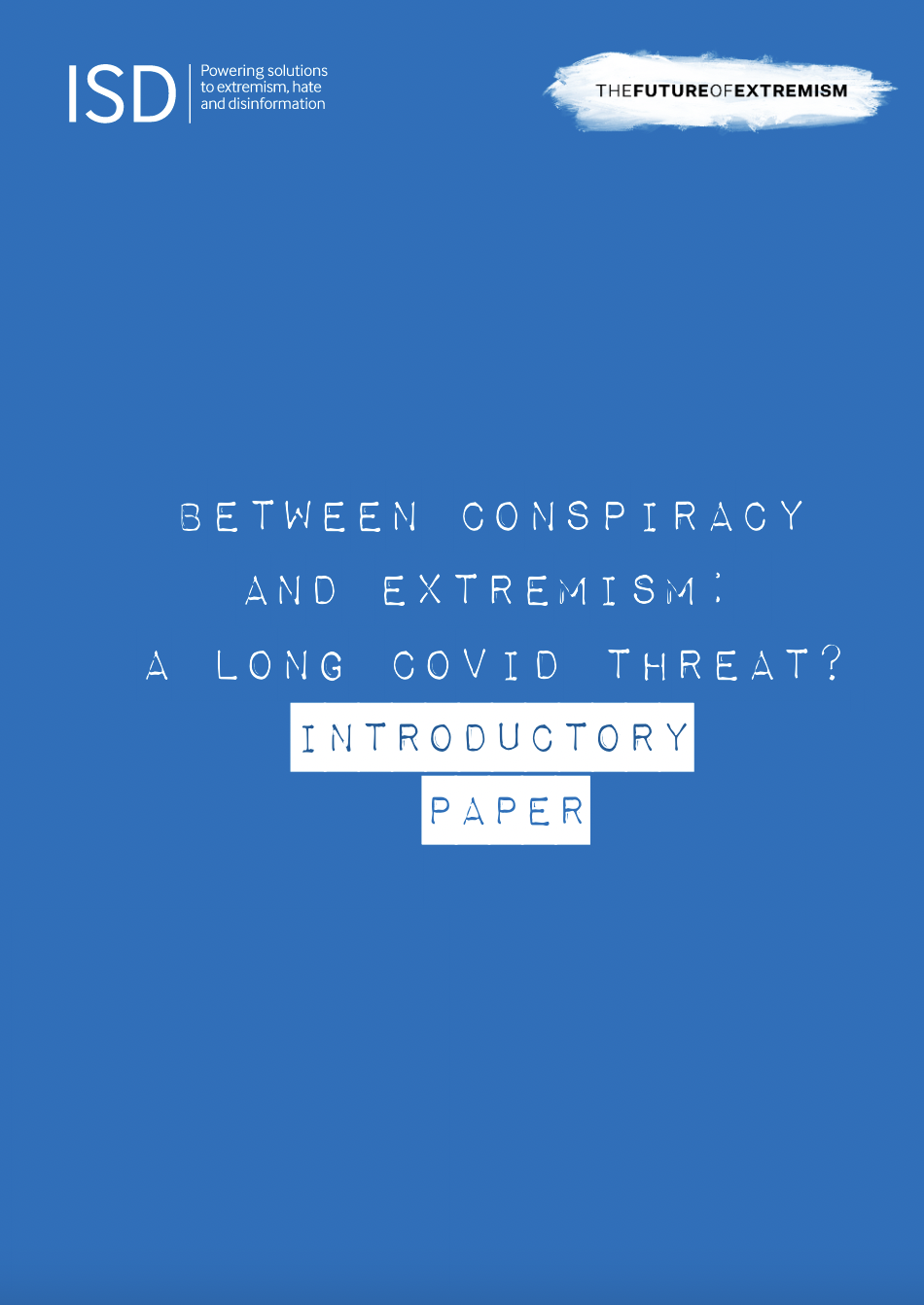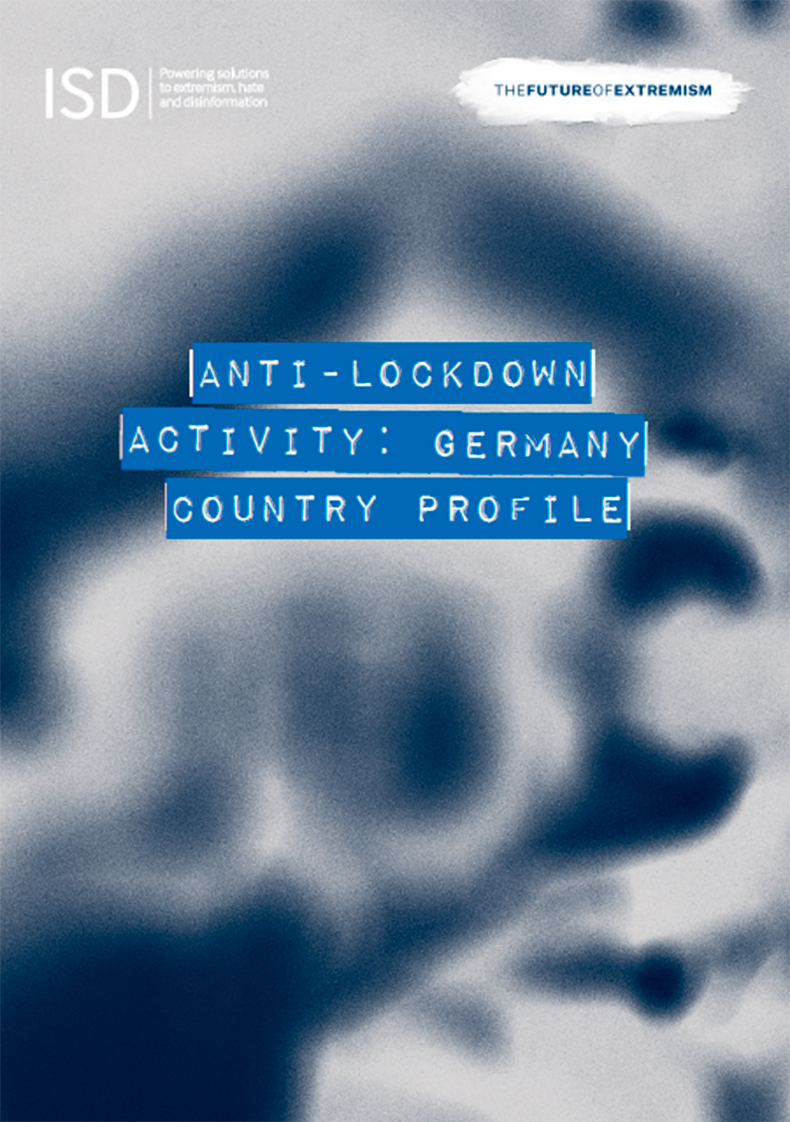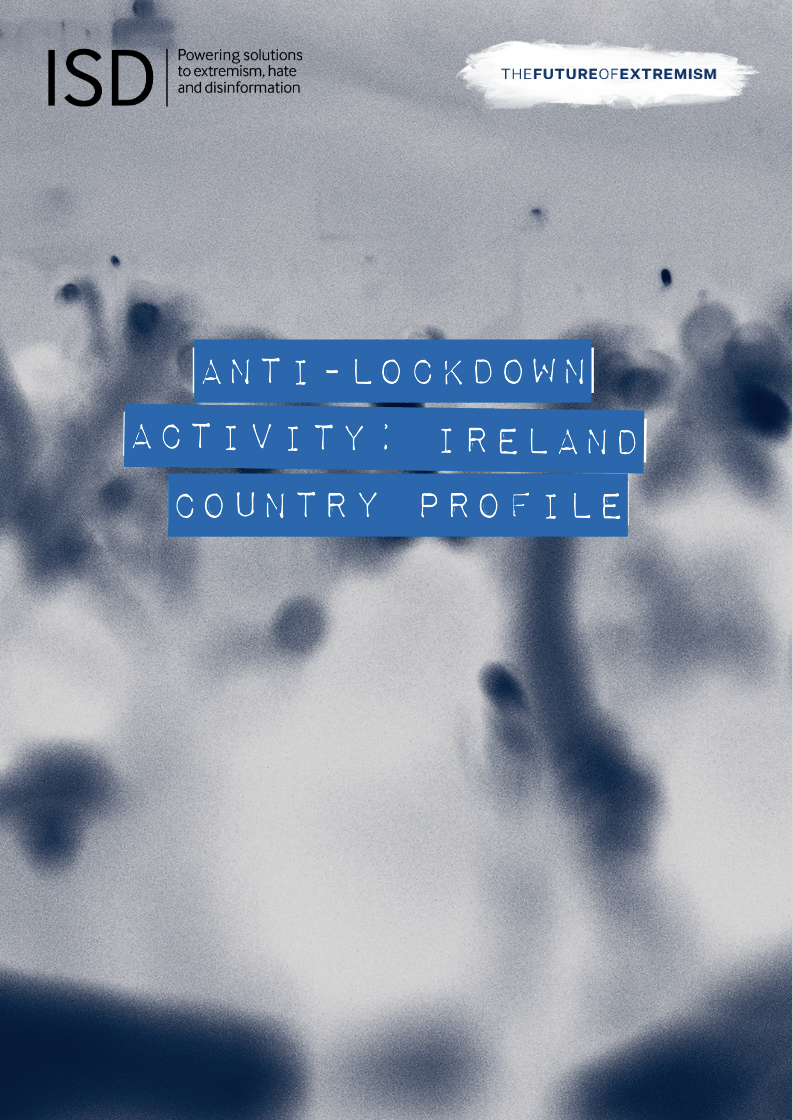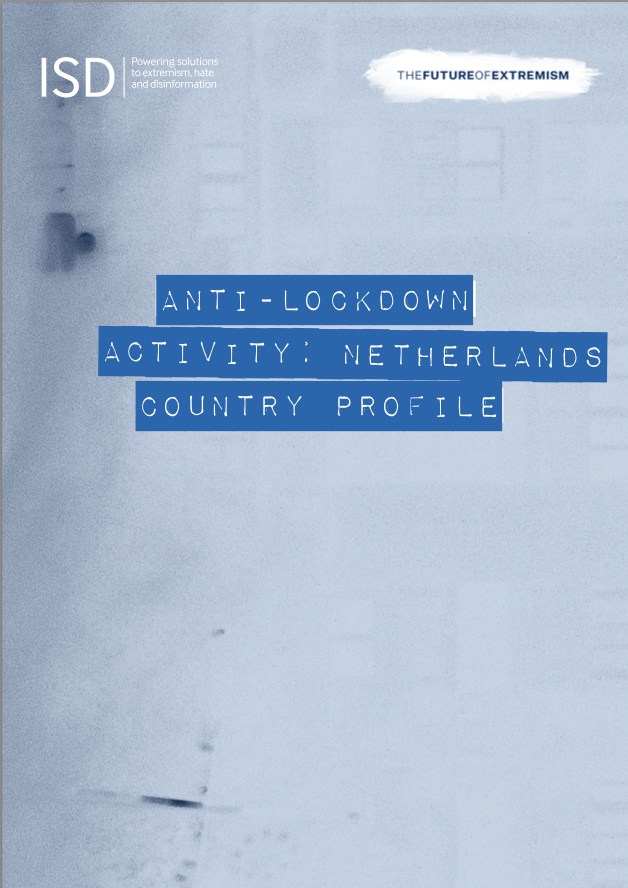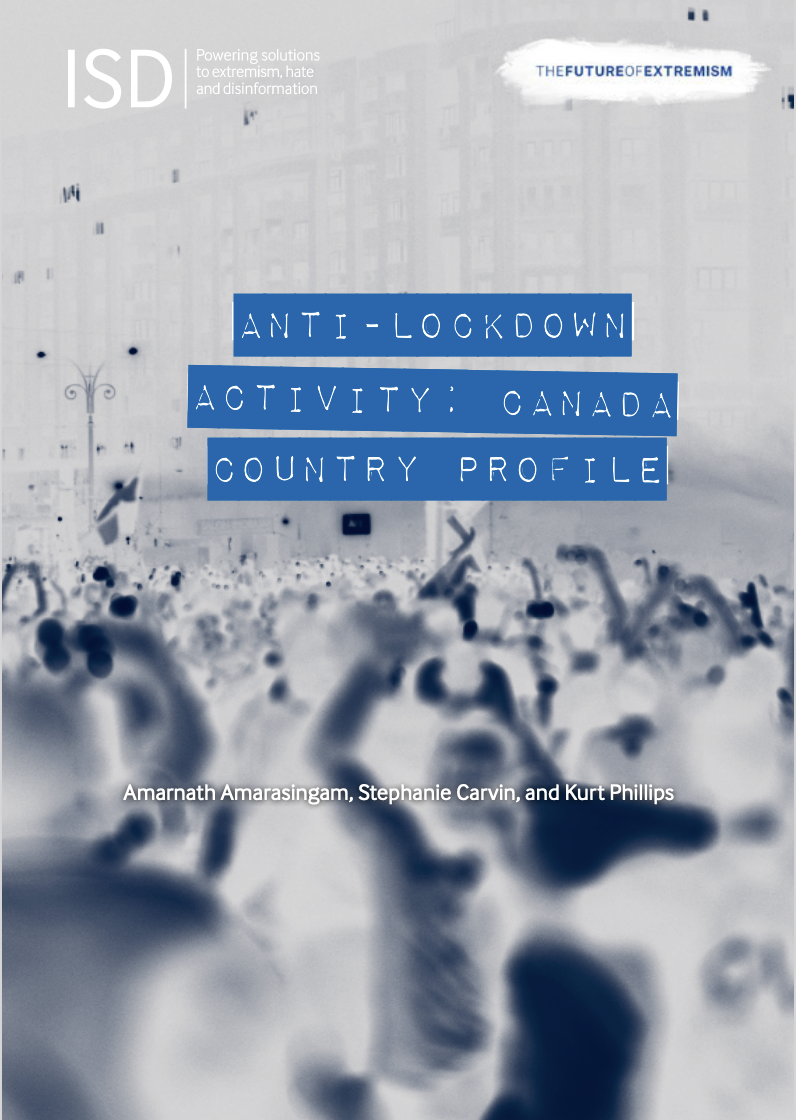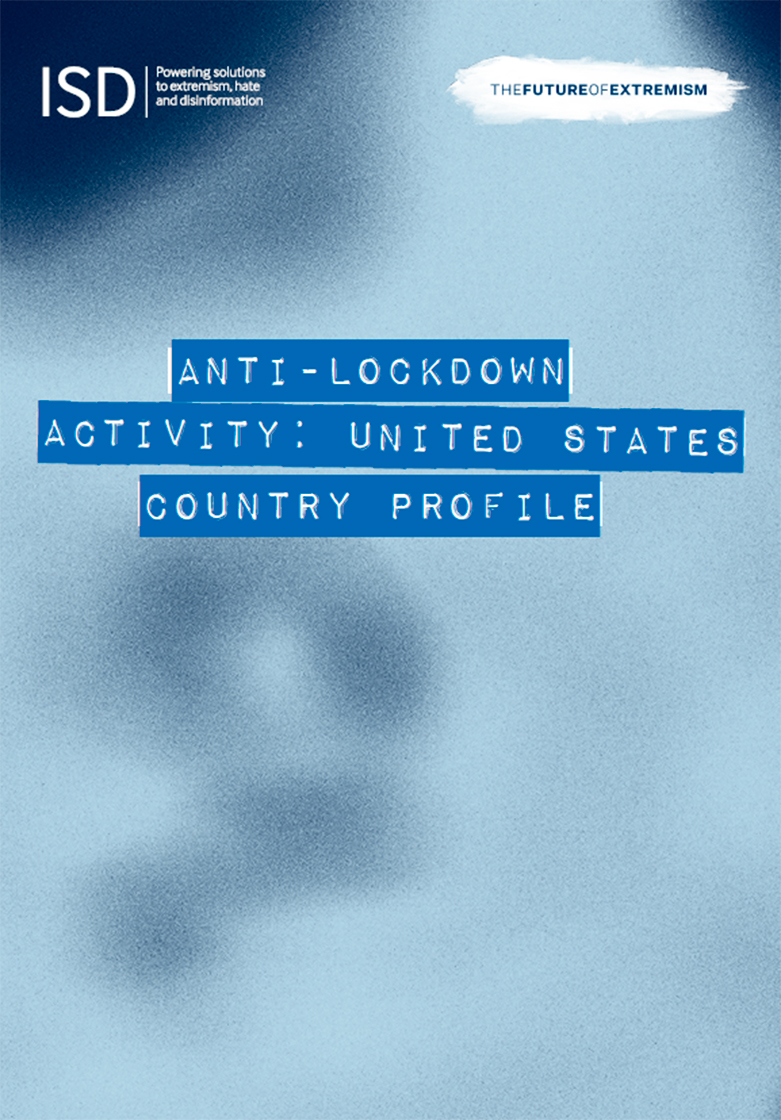New Series Tracks Online Anti-Lockdown Activity Internationally
Government restrictions in response to the COVID-19 pandemic have resulted in the emergence of new protest movements in many countries worldwide. These movements are unified by a shared outrage at the real and perceived curbing of their civil liberties as a result of government responses put in place to contain the spread of COVID-19.
However, other commonalities exist including intersection with more established extremist movements and engagement with a range of harmful activities. In this series of briefings, ISD deconstructs this surge of transnational activism across a range of countries including Canada, Ireland, Germany, and the Netherlands. We explore the long-term threat the movement poses and discuss the appropriate policy responses.
_________________________________________________________________________________
Conspiracy theories, disinformation and fringe online activism have become part of – and the subject of – public debate. Mixing with online harassment, extremist mobilisation and a range of other harms, these issues now present a hybrid threat.
The COVID-19 pandemic has offered a unique opportunity for disparate groups to come together with shared grievances, mixing their narratives and talking points, providing extremist movements with a vulnerable audience they perceive as ripe for radicalisation. Anti-lockdown protests are attended by a wide range of localised groups, but their attendees are often motivated by shared narratives, including ‘New World Order’ conspiracy theories, anti-vaccine sentiment and a distrust of government and mainstream media outlets.
These movements, which bring together anti-vaccine conspiracy theorists, anti-government actors and extreme right-wing movements, have engaged in a range of harmful activities including hate speech, harassment and intimidation, and in some cases threats of violence or actual violence against politicians, police and journalists.
The movements are generally characterised by their consistent and motivated online presence, effectively instrumentalised to mobilise people to take their dissatisfaction to the streets. These protests can be understood as physical manifestations of the hybrid threat landscape online, in which disparate groups of actors like New Age spiritualists and conspiracy theorists are coordinating and converging with established extremist movements.
Across this series of briefings, we examine protest movements responding to COVID-19 restrictions in the USA, Canada, the UK, Ireland, the Netherlands, Germany and Italy. In our analysis of these movements, we demonstrate how boundaries between disinformation, hate speech and harassment, conspiracy theories, and extremist mobilisation have become increasingly blurred.
Each report is informed by a combination of open-source assessments of reporting around protests against COVID-19 restrictions and ethnographic exploration of social media activity.
_________________________________________________________________________________

